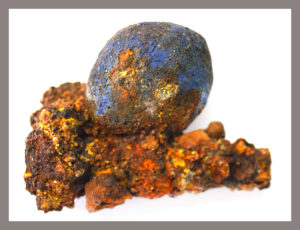 Autore: Ariadne Kostomitsopoulou Marketou
Autore: Ariadne Kostomitsopoulou Marketou
scarica l’articolo in formato .pdf: The Pigment Production Site of the Ancient Agora of Kos (Greece): Revisiting the material evidence
Un sito produttivo risalente all’età tardo ellenistica fu messo in luce nel settore orientale dell’agorà di Kos. Resti di fornaci, pur se scarsamente conservate, testimoniano processi piro-tecnologici relativi alla metallurgia e alla manifattura di pigmenti. La produzione dei pigmenti includeva il trattamento di terre colorate e la manifattura del blu egizio, un pigmento artificiale. Alcuni tra i materiali rinvenuti nel sito (barre tubolari di litargirio, masse amorfe e gocce di piombo, e residui d’argento) indicano la produzione di piombo e la separazione dell’argento tramite coppellazione. La compresenza delle due diverse attività manifatturiere nello stesso impianto artigianale potrebbe essere stata vantaggiosa in termini di approvvigionamento di materie prime e combustibile. La posizione strategica della manifattura, situata nel centro commerciale della città antica e interconnessa con il porto, avrebbe facilitato la commercializzazione dei prodotti. Gli scarti produttivi suggeriscono una relazione tra la produzione di pigmenti e la metallurgia.
A late-Hellenistic production site was found at the eastern stoa of the agora of Kos. The presence of destroyed fire-structures indicates pyrotechnological processes, related to pigment manufacture and metallurgy. Pigment production included the treatment of natural earths and the manufacture of the artificial material Egyptian blue. Among the excavation’s finds were hollow tubular litharge rods, amorphous lead lumps and drops, and a small quantity of silver, which point to lead production and silver separation through cupellation. The co-existence of the two separate manufacturing activities at the same site may have been beneficial in supplying the workshop with raw materials and fuel. The strategic location of the production site in the commercial centre of the ancient town, with its connection to the port, would have facilitated trade. The production debris from the Koan site underlines the relationship between pigment manufacture and metallurgy.
